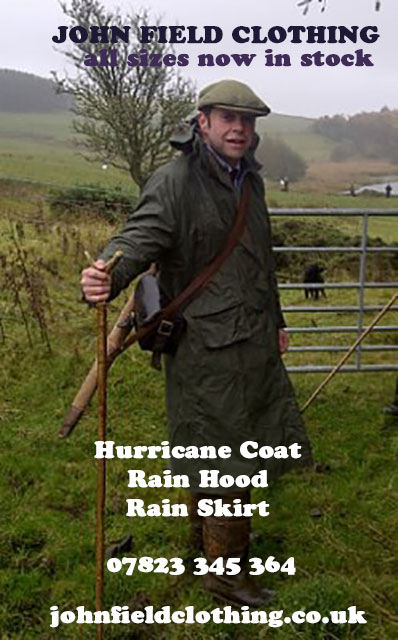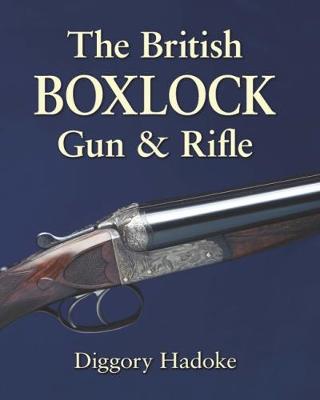Here in England, the first game bird presenting an opportunity to the sportsman each season is the red grouse.
Red grouse are native to Britain and occur only in these islands, being present in Northern England, Scotland, Ireland and Wales. They exist nowhere else on earth and are totally wild born and bred populations, unlike pheasants and partridges, which are predominantly hatched in farms and released as poults in July or August and habituated to an area through feeding and habitat provision.
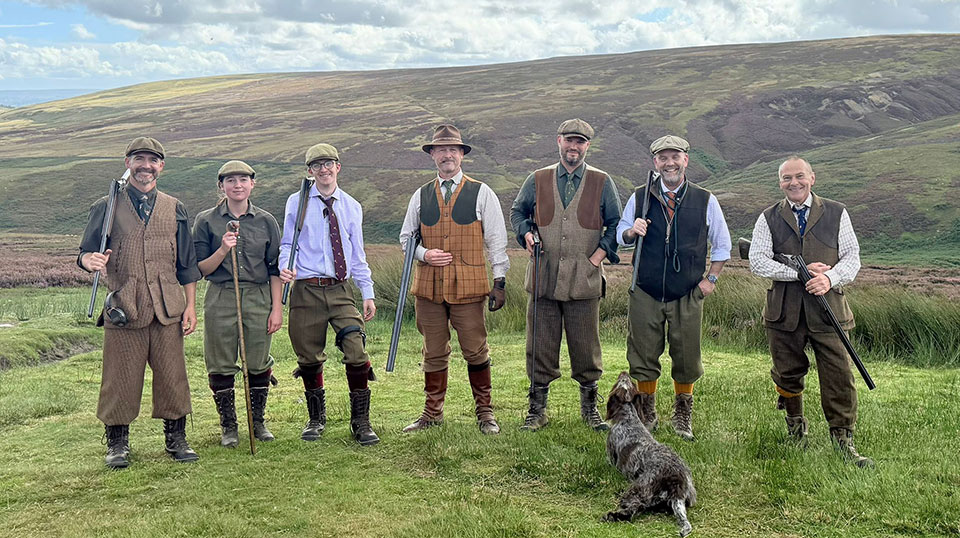
Grouse numbers are dependent on nature and the weather. A wet or cold start to the year can kill chicks at their most vulnerable. Parasites also kill chicks and adult birds and the depredations of heather beetle, which destroy the only food grouse eat, young heather shoots, also have a significant effect on the success of each breeding season.
It is, therefore, little wonder that a grouse moor might hope to have five or six years a decade in which a shootable surplus of wild birds survives. Other years are write-offs, still incurring all the costs of gamekeeping and moorland management with none of the sport or revenue necessary to pay for them.
Many shooting men go their entire life without ever drawing a bead on lagopus scotica, which is a shame because to those who do, the grouse is the ultimate game bird and grouse shooting the pinnacle of shotgun shooting.
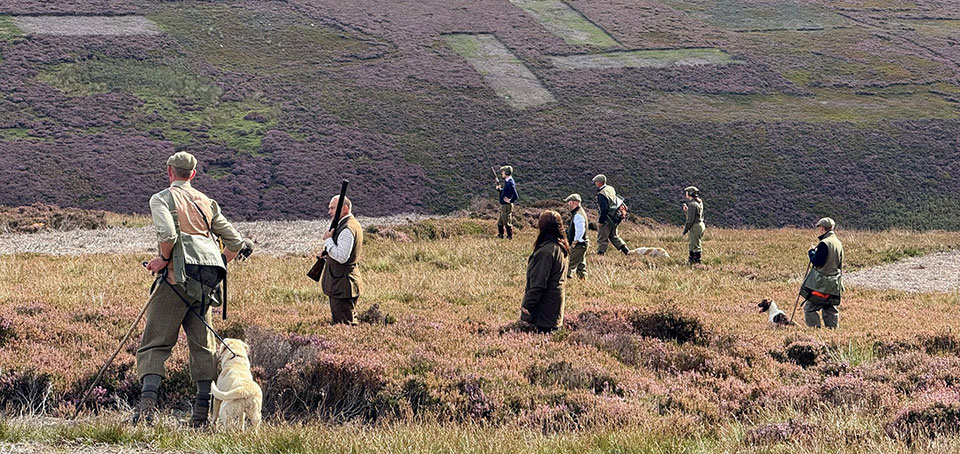
Grouse have been here as long as we have and British sportsmen have been shooting them since firearms were first taken afield.
For me, striding into the heather, hammer gun over my arm, grouse cackling ahead of me is a throwback to the dawn of shooting sports. Just men with guns and well-trained dogs flushing these tough, surprisingly dense little birds, presenting a fleeting opportunity to connect before they are over the horizon.
In late August of 2025, I was fortunate to join a group of friends, five of us shooting and others working spaniels, GWPs and retrievers on the Raby Estate near Barnard Castle in County Durham.
We were accompanied by three ‘keepers for a full day striding over heather, clambering up steep bracken covered banks and doing our best to connect with a few grouse. My fellow Guns mostly opted for 28-bore over & unders but I took my 1866-patent Thomas Bissell 12-bore hammer gun.
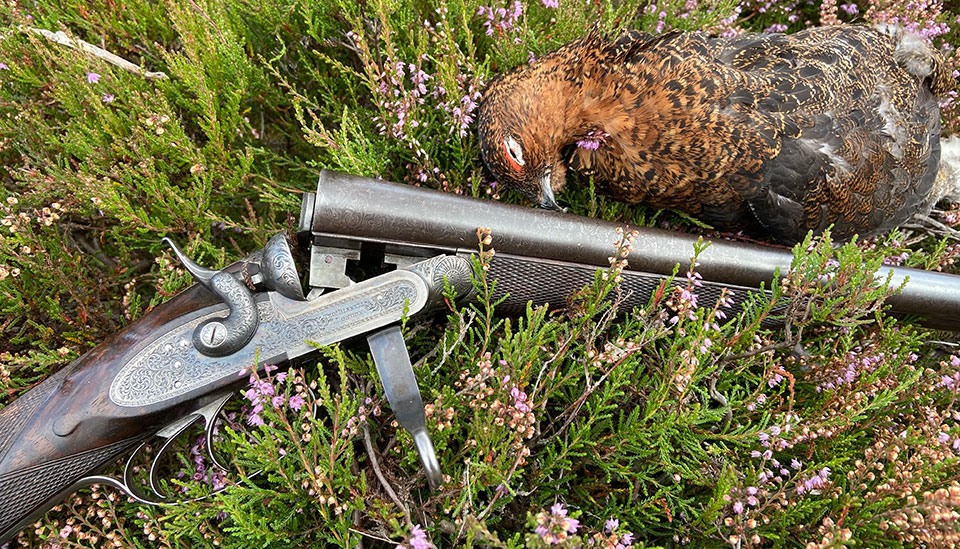
The Bissell was made in Bermondsey, South London, by the man who invented the ‘Rigby rising bite’ and who collaborated in gun-making with John Rigby for the last quarter of the 19th century, to their mutual benefit.
The gun has Bissell’s own 1866-patent extractors and rebounding bar locks, pin-fire like fences and 30” Damascus barrels. It is operated by a Jones under-lever and screw grip and is in remarkably original condition.
Being unsure how close the grouse were likely to rise in front, I packed a few Hull CompX, 24 gram, No.7 1/2, fibre-wad loads. These are very soft shooting and would be fine for close range work. For the second barrel I opted for a heavier load; 30 gram No.6 shot of various types I happened to have left in cartridge bags from last season.
These went into my old William Evans cartridge belt; one I bought in London over twenty years ago. I prefer a belt when walking-up. It spreads the load nicely and provides twenty-five cartridges with instant access. We were able to replenish mid-way through the day.
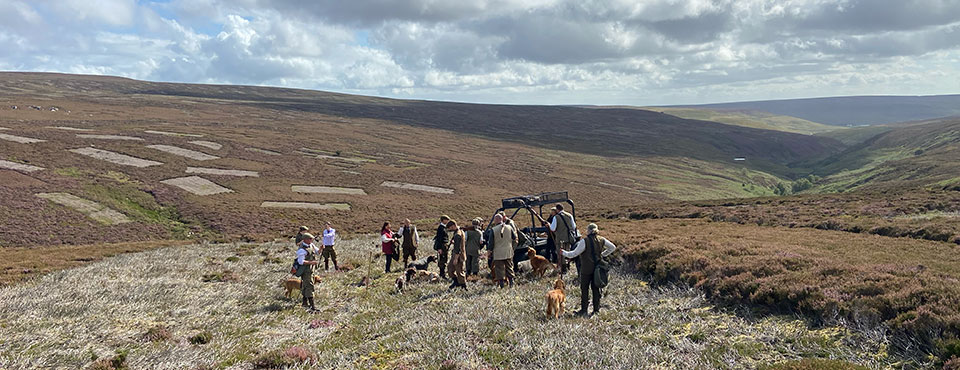
Unfortunately, my two vizsla bitches had come into season at the most inopportune time. So, I was unable to take them with me.
The weather blessed us with a light drizzle over breakfast, which had disappeared by nine o’clock, leaving a sunny, warm day with a light breeze. Perfect weather for walking-up grouse.
The trick to success is to be alert and ready for a bird to flush at any time but not to rush the shot. Controlled aggression is required. If you hesitate, you will fail.
The standard of shooting throughout the day was, I thought, very high. We all missed some easy birds by snatching at a rise but we generally connected and the dogs did a great job of picking-up as we went. The advantage of shooting as we walk is that any wounded birds fall in front and will be picked even if they land 200 yards ahead.
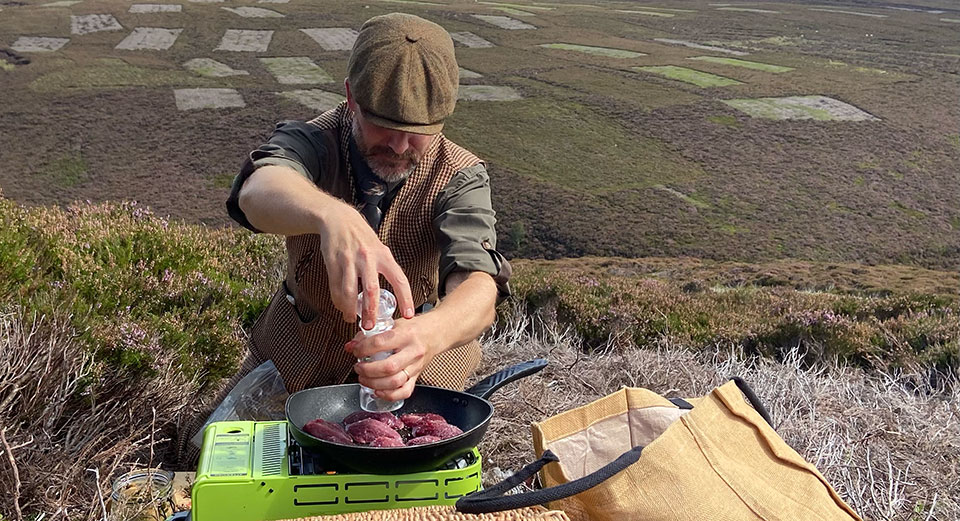
This year has been generally a tough one for grouse, despite the advantages of a dry spring, the long summer drought and infestation of heather beetle has caused problems which have been added to the very poor breeding season last year, which was blighted by a very cold, wet spring.
Conditions, however, are always localised. In every bad year there will be some estates with plenty of grouse and in good years there will be some with none. Raby, this year is showing healthy numbers and we shot a fair balance of old and young birds.
One of the features a hammer gun has, which a modern gun does not is the ability to be carried loaded but not cocked. Where terrain is challenging and a sportsman may be inclined to carry his gun open or empty, with a hammer gun it is possible to simply ease the hammers and carry the gun perfectly safely with cartridges in the chamber but not cocked.
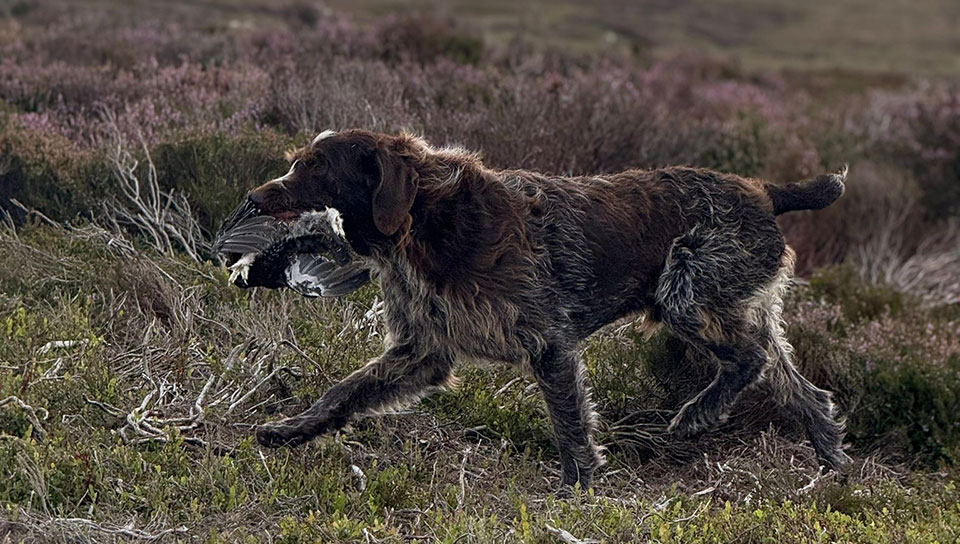
On several occasions this enabled me to bag birds that flushed as we climbed a steep valley side. As birds flushed higher up the line and were called, I was able to stop, cock one hammer and snap-shoot as it flashed past on the horizon.
We stopped midday for Jonathan McGee to get out his gas field stove and prepare some grouse breast burritos, with spicy salsa. Perfect for the conditions and delicious, using birds shot mere minutes earlier.
By day’s end we had thirty one and a half brace of grouse, sore feet and aching legs. This is not a sport for the overweight or unfit. Aged fifty eight, I’m glad I am still in good enough physical condition to play the game and vindicated in my insistence on training twice a week with Andy, my ex-Royal Marines PT instructor. I’m very much convinced that as we get older we either use it or lose it and I don’t plan on putting my feet up for a few years yet!
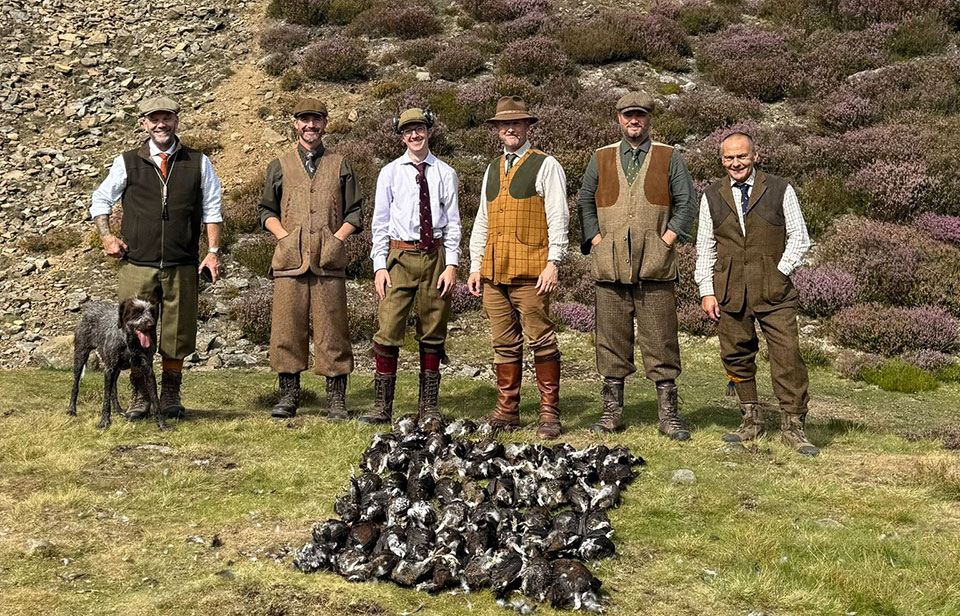
Days like this require effort. It was a five hour drive up to Raby from home and to get back I woke at four thirty and was on the road by five in the morning. That said, I stayed in two lovely local pubs with good food and fine beer either side of the shooting. That also underlines the economic benefit to rural areas of visiting shooters, who use local businesses.
County Durham is beautiful, walked-up grouse shooting is the essence of shotgun sport, providing exercise, access to incredible scenery and opportunities for pointing dogs to do their traditional work to the delight of all present.
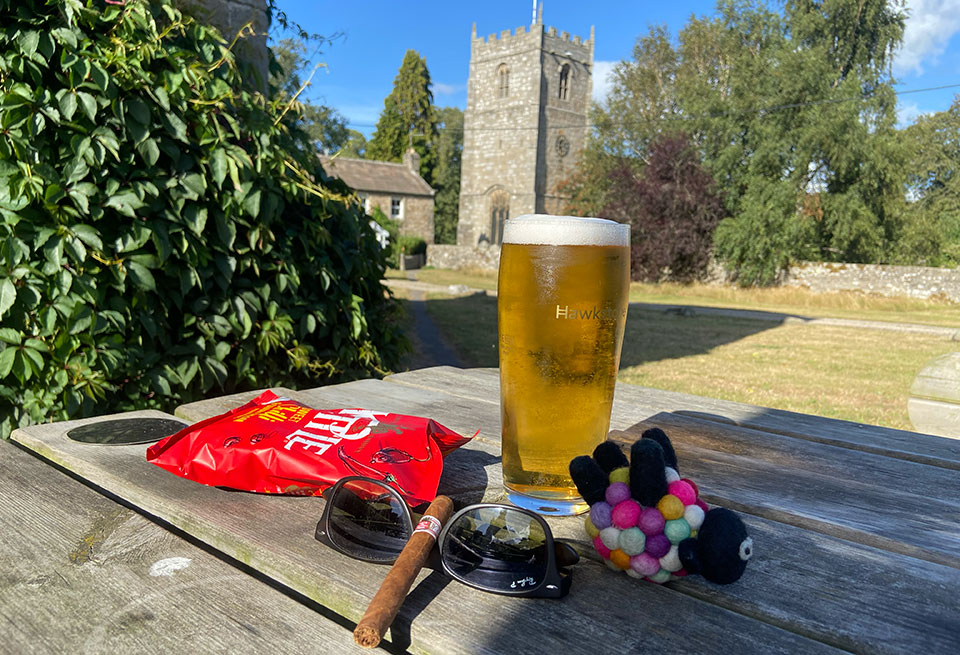
I’m due back in the area later this month for some driven grouse on a nearby estate but this date is going straight into next year’s diary.
Published by Vintage Guns Ltd on
